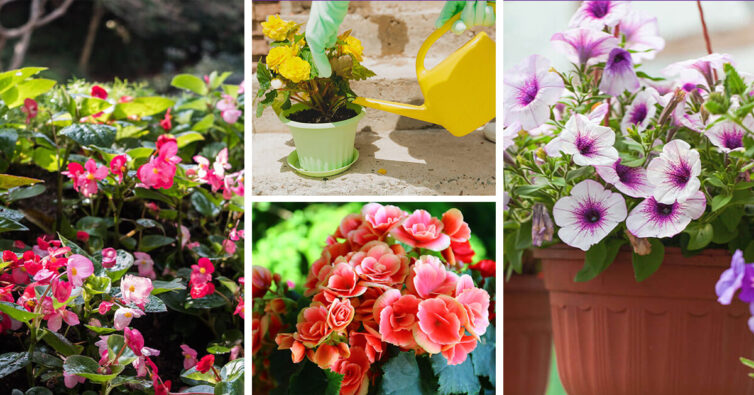Begonias are a beloved plant among gardeners. They’re the fifth largest genus among flowering plants, with 1,800 known species, so it’s no wonder people fall in love with their petals. Begonias have unique leaf patterns, sizes, shapes, and colors-something sure to please everyone. This guide is here to teach you everything you need to know about proper begonia care.
Key Takeaways
- Begonia are low-maintenance plants.
- These flowers are a good choice for beginner gardeners.
- Depending on the type of begonia you have, it will grow between 8 inches and 2 feet tall.
- The blossoms of Begonias can be single, double, ruffled, or smooth.
Bedazzled Begonias
These flowers are native to tropical regions throughout the world but for Australia. They’re a landscape favorite because they fit nicely into space, offering brightness. Despite their love of light, they do not handle direct sun very well. Having some type of tree overhang or a spot in your yard that gets diffuse light is best for them.
Want to see them grow really well? Use tomato fertilizer (it’s high in potash). Begonias grow in USDA Hardiness Zones 3-11.
Seeing Begonias in your dream represents harmony among people and a little of good luck on the horizon. If you’re in a close relationship, your interactions can take a downturn if you don’t avoid useless arguments. Keep sensibility at the forefront. During a bout of sickness, a dream of begonias implies improvements soon to follow. People who are workaholics dreaming of begonia flowers would do well to find a better work-home balance. When you see sickly begonias in your dream, there are negative influences in your life. Discern where they lie, and break yourself free.
Basic Begonia Care
You’ll find begonias aren’t overly needy. Some feel they’re the gardener’s favorite plants for just this reason. The trick becomes caring for your outdoor begonias during winter. They are not fond of the cold. With this in mind, you might consider outdoor container planting so you can easily move them to a safe location when the temperatures drop.
Bright light is fine for your begonias so long as it is not DIRECT light. Their leaves are sensitive to noon-day sun. Additionally, these plants require fertile, well-drained soil. They are succulents, so dry spells won’t affect them as much as your other garden plants.
Because begonias prefer a humidity of around 40%, summer proves the best growing season. Prune your begonias regularly to keep them healthy, eliminating leggy stems and dead growth.
Inside, Outside, Upsidedown: One of the best things about begonias is their versatility benefits gardeners. You can grow them inside, too! The growing needs and requirements in both settings are pretty much the same. Brighten up in your indoor landscape!
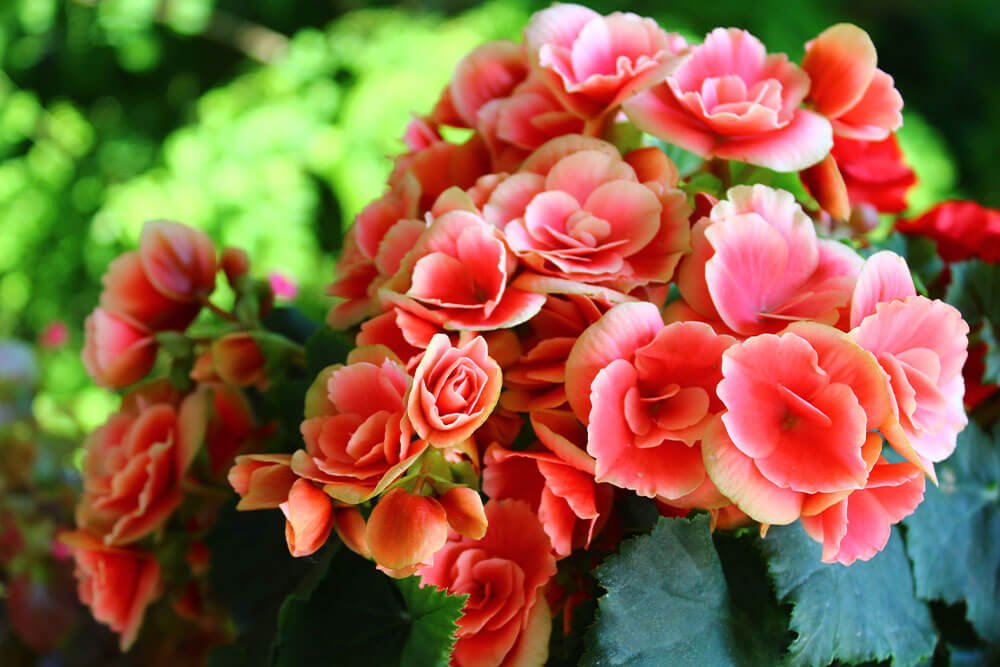
Begonia Care Know-How: Needs
There are commonalities between plants. Each has specific light, water, and fertilizer needs. Begonias are no different. Outside diffused light matters the most. If you plan to bring these flowers in for the winter, you’ll want a sunny window but not one with pounding light.
When watering your begonias, pay particular attention. They are like several other succulents who like it “moist,” not wet. When you’re out in the garden, check the soil around your plants. If it’s dry down to 1”, it’s time for watering. Don’t pour the water on quickly. Go slow, so the soil can absorb it, looking for runoff from drainage holes if you have potted flowers.
Begonias love humidity. However, it’s a factor difficult to control outdoors. You can place several begonia plants near each other (they help moisturize each other). Or if you have trees overhead, they can capture some dampness for your flowers. Mulch is a great way to regulate moisture too.
When you’re ready to feed begonias, you’ll be happy to know fertilizer exists specifically for these plants. Barring that, use 20-20-20 mixes for potting and 15-30-15 to support blossoms. Check the instructions. Many all-purpose products require dilution so they don’t burn your flower’s roots.
Stem cuttings are one way to propagate begonias. When you want to expand your collection, you can do so! Just snip a few healthy leaves. Turn them upside down and slice them into sections using a clean, sharp trimming tool. Look for a vein in each piece. Put each section into a baby food container filled ⅓ with water. This way, you can watch root development. When the roots reach about 1”, put them into a potting media.
Buying Begonias
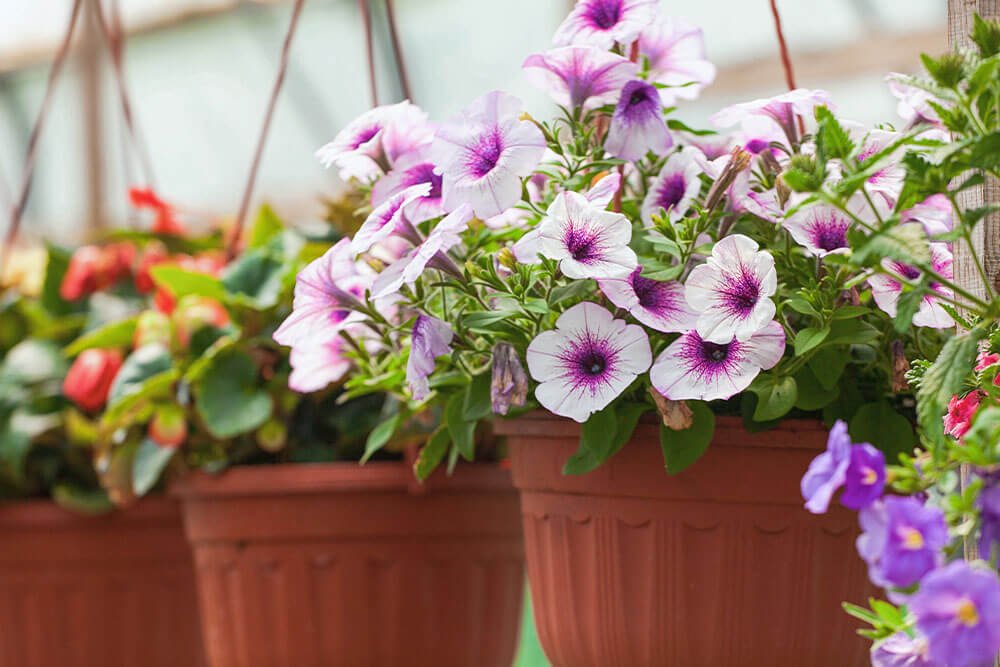
Shopping for begonias can become quite a task, especially if you have a well-stocked nursery. Here are some for you to watch as you shop:
- Ambassador: 12-inch compact green plants with large petals. Some are bi-color. Others are pink or crimson.
- Angel Leaf: When a leaf from this plant appears from the side, it looks like a long wing. These can grow up to 8 feet.
- BIG: As the name implies, these are some pretty fierce begonias. They grow to 36 inches tall. Red flowers; green-bronze foliage.
- Boliviensis: An excellent, graceful choice in heat-tolerant begonias. Put them in an outdoor window box for a cascade of color. The flower is trumpet-shaped.
- Cocktail: Cocktail begonias produce pink, rose-pink, or white flowers. The plant maxes out at about 8 inches with bronze-hued foliage.
- Dragon Wing: A dramatic begonia with 5-inch long leaves (on a 3-foot tall plant) and pink or red flowers. This blooms from the initial opening until frost. The smaller version is Baby Wing, growing only to 15 inches high max.
- Masonia (Iron Cross): Dark chocolate centers offset pale green edges—mature height and width – 1 foot.
- Painted Leaf (Rex): These plants have outstandingly beautiful leaves, salmon pink with purple outlines and uneven edges (or crimson, silver, green, and sometimes splashes of red)—mature height: 18 inches. Cultivars include FIre Works, Merry Christmas, and Helen Teupel.
- Pizzazz: Compact plants with blossoms that seem to compete for space on the top. Height and width 8-10 inches.
- Prelude: The prelude series blossoms all season long. The leaves are glossy and variegated. Mature height is 8 inches.
- Reiger: Seen often around the holidays, the Reiger has medium-sized double flowers with creamy yellow, red, or pink flowers.
- Rhizomatous: Maroon undecided, deep-green fronds. A hardy outdoor choice. With a plethora of white or pink flowers, it creates a textural contrast.
- Tuberosa: When you want bog flowers, this begonia won’t disappoint. Not only do they have huge blossoms, but they’re double! Tuberosa has serrated and fuzzy foliage.
- Wax Begonias: The most commonly seen. Wax begonias reach about 1 foot tall. They bear flowers in various colors, from white to deep red.
Begonia: Healing Properties Studies show some compounds in begonias may have medical uses. While investigation continues, signs indicate anti-oxidant, anti-inflammatory, and anti-bacterial qualities exist in begonias.
Watering Begonias
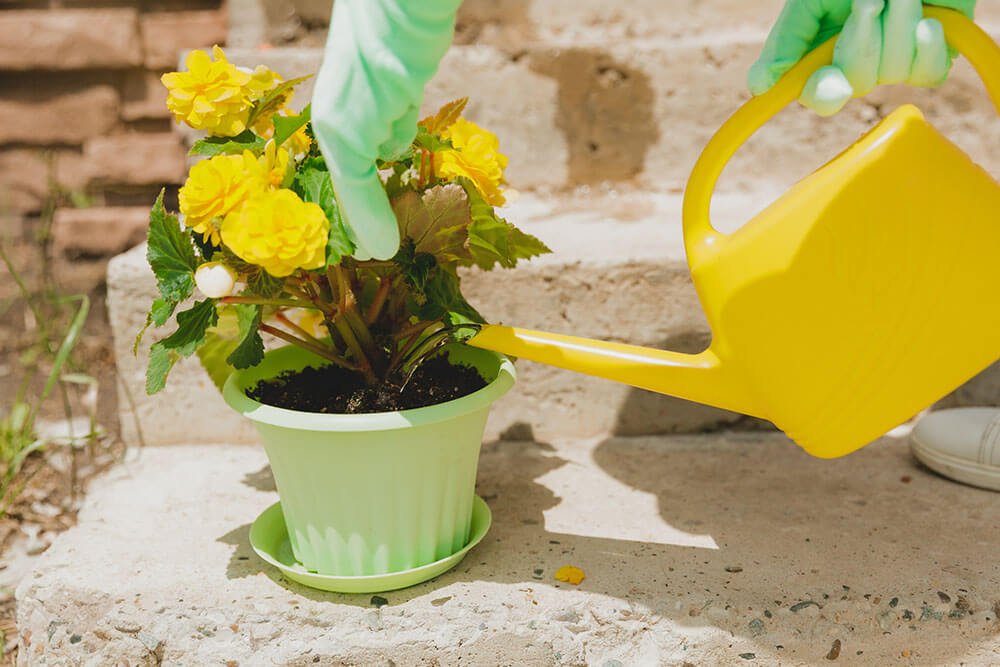
Not sand dry – moist. Not soggy – moist. That sums up begonia watering in a nutshell. Keep them evenly moist, and you’ll have thrilled plants.
When begonias are dry, only water them when you have a well-ventilated area. That requirement means taking a little more care in yard placement to allow for it. Damp leaves often lead to mold or mildew, so water the plants at ground level.
In a normal growing season, water your begonias every three days. If it gets hot, increase your outdoor watering schedule to daily.
Several species of begonia are toxic to pets. Some are not. If you’re unsure, growing them outdoors helps protect your indoor cats and dogs. For outdoor pets, put the begonia where they cannot readily access it.
Outdoor Potting and Repotting
Some of the larger begonia varieties are best in the ground vs. potting, but most cultivars thrive well in containers. Don’t get pots that are HUGE. Smaller ones keep begonias happier and less prone to root rot. If you notice the roots of your begonia peeking out of the drain holes of its container, it’s saying, “I need more space.”
Whether you’re bringing home a plant from the nursery or transplanting one, you want a pot about 1” wider in diameter than the current one and no more than 2-3” wider than the root ball. A soil mixture of peat and perlite helps moderate moisture retention in the new vessel.
The Begonia Edible Family Tree: Begonias are part of the same family as squash, zucchini, and pumpkin. Like those, Begonias are edible and taste a bit citrusy. You can use them in soup, salad, as part of syrup, steeped in vinegar, candied, and much more. Sometimes people use the stems like rhubarb.
Begonia Pruning and Maintenance
Pruning is quite healthy for your begonias, encouraging new growth, and it makes them look nicer, too. If you are bringing your begonia in, prune in the fall. If the plant is staying outdoors, wait until early spring. Trim back old stems and leaves. Move slowly, taking a step back from your plant regularly to observe uniformity on all sides.
The Way-Back Machine: Stories dating back to 14th century China describe plants sounding much like begonias. It wasn’t until 1690 when Charles Plumier (a French botanist) named the flower after one of his fellows, Michel Begon, who was also the governor of Haiti.
Blooming periods of Begonia
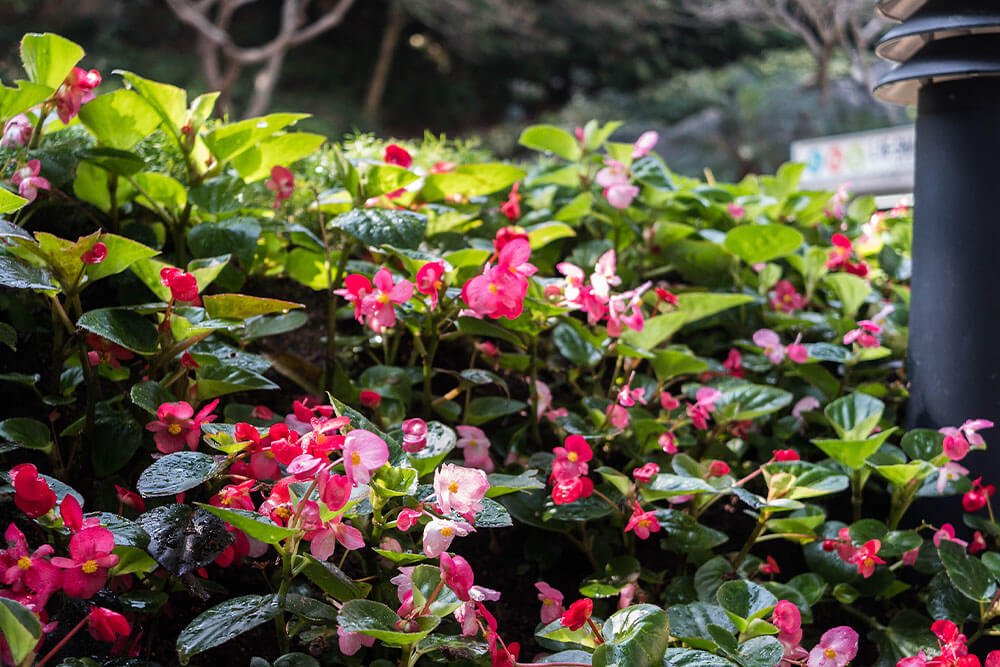
Tuberous begonias have a period of dormancy that only lasts a few weeks. Other types blossom all year long. Learn about your plant. From the beginning of growth, most begonias take 12-15 weeks to flower, then just keep going until the season ends.
Bigger is not Always Better: Begonia seeds are among the smallest in the world among flowers. One ounce of seed produces upward of 3 million baby begonias. Don’t bother with a ruler! They are only 1/100th of an inch in size.
Outdoor Common Pests and Plant Diseases
One struggle regarding begonia pests is that the plants are sensitive to insecticidal soap. As soon as you see any signs of mealybugs, spider mites, whiteflies, slugs, scales, or thrips, spring into action. If you can use the soap sparingly at this stage, it protects your plant and dispels the bugs.
As far as bacteria goes, there’s leaf spot, powdery mildew, botrytis, crown rot, and root rot, among a few others.
- Powdery mildew looks like white powder on the top of begonia leaves.
- Botrytis appears as gray patches on stems, leaves, and begonia buds.
- Crown rot appears at the stem base as a brown mold. While high temperatures can cause. crown rot, so can plant stress.
- A wilting plant with yellow lower leaves indicates possible root rot. It may smell bad, too.
Troubleshooting Common Begonia Problems
- Wilting, dropping leaves: Not enough moisture. Adjust the watering schedule.
- Deformed or discolored foliage: Possible nutrient problems. Get a soil sample.
- Sparse-looking leaves: Poor lighting. Transplant it to a better yard location.
- Brown tips: Too much direct sunlight. Find a defused light location.
- Yellow leaves: Over-watering.
- Holey leaves: Possibly the presence of slugs and snails. Investigate your plant looking for slimy residue.
Begonia Sun Signs: If your sun sign is Virgo or Sagittarius, begonias complement your nature. Begonia supports a Virgo’s practicality. For Sagittarians, they foster wisdom.
[wp-faq-schema title=”Frequently Asked Questions About Outdoor Begonias” accordion=1]Summary
It’s easy to become enthralled by begonias, if only for their grand diversity. They give vibrant color, long blossom times, and easy propagation, all bundled up with low maintenance requirements. You don’t have to be an expert gardener to appreciate these flowers. Enjoy them as they attract pollinators to your garden for as long as they blossom.

